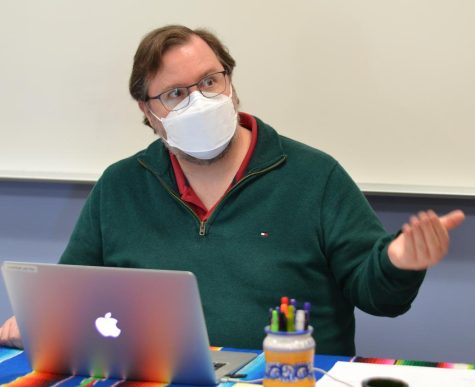Teachers reflect on Omicron’s implications for the district
January 6, 2022

With new COVID-19 case counts in Santa Clara County rising to the highest they’ve ever been, many teachers are concerned about how the Omicron variant will impact their health, their students’ health and their school’s in-person status.
English teacher Lizzie DeKraai says that, despite having taken both vaccines and a booster, she still worries about getting sick.
“I’ve had friends and family get COVID over the holidays who are also vaccinated and boosted, so I am trying to be as safe as possible, but I’m still nervous,” DeKraai said.
Though vaccines and boosters are effective at preventing severe illness and are highly recommended, Omicron causes breakthrough infections more frequently than other variants, according to the Center for Disease Control, so proper precautions are still highly recommended by the CDC.
“[I’d advise students] to wear proper masks, as good quality as you can possibly find, and to stay home if you are feeling unwell,” DeKraai said. “The symptoms are very similar to the common cold, so even if you’re [only] sneezing or coughing … please do not come to school.”
DeKraai said she’s happy with some of the new steps the school is taking, such as providing free, take-home rapid COVID tests. However, she said she wishes teachers had that resource as well.
Some worry these measures will not be enough to keep students and teachers safe, and the topic of full or partial closure is being reintroduced. In a Palo Alto Online interview with Palo Alto Unified School District Superintendent Don Austin published Jan. 3, Austin said that classes may have to be closed in the following weeks.
“Nobody wants to go back to online learning, but it may come to that point,” said spanish teacher Kevin Duffy. “If a certain number of students and a certain number of teachers are out, what do we do?”
However, pre-service teacher Lessa Bouchard said she would like administrators to prioritize remaining in-person if possible in light of new data about social isolation’s impacts on teen mental health.
According to a national poll published March 15 by University of Michigan’s Medical School, nearly half of parents saw their teens’ mental health worsen during the pandemic, while 13-14% saw withdrawal from family, and 8-9% saw increased anger issues.
“Being in school and continuing to have contact with each other is maybe a No. 1 priority, as opposed to what we maybe previously thought, you know, [where] protecting us from the virus was [our No. 1 priority],” Bouchard said.
Spanish teacher Kevin Duffy echoed Bouchard’s sentiment about the difficulties of virtual learning.
“It’s understandable that we’re all kind of on high alert,” Duffy said. “But at the same time … our place is here with our students, and it was so hard when we were on Zoom learning.”
Though Duffy said he doesn’t want to go back to distance learning, he offered some advice for if the situation did occur.
“I hope we don’t have to go there,” he said. “But if we do, we just have to face it and do our best.”
This article was co-published in Anthro Magazine.


